You have 0 product(s) in your cart.
Abyss Scuba Diving
Discover The Biggest Fish: Giants Of The Aquatic World
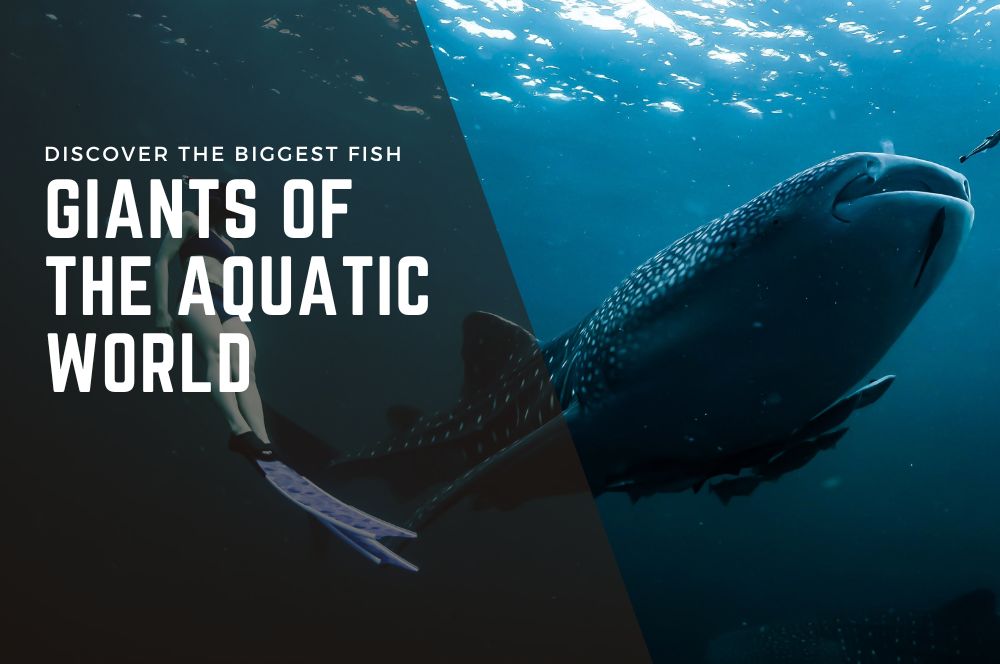
Discover the Biggest Fish: Giants of the Aquatic World
The whale shark reigns supreme as the ocean's gentle giant, with a majestic length that can stretch up to 18.8 meters and a weight that tips the scales at a staggering 21 tonnes. These underwater behemoths are not only a marvel of the marine world but also a testament to the wonders that lie beneath the waves. Our exploration into the aquatic world reveals the critical roles these giants play in their ecosystems and highlights the urgent need to protect them. Dive with us into the deep blue as we unveil the secrets of these colossal creatures and the efforts to safeguard their future. Whether you're a seasoned diver or a curious reader, prepare to be captivated by the tales of these titanic swimmers and perhaps, inspired to embark on a diving adventure to witness their grandeur in person.
Key Takeaways
-
The top ten largest fish species, including the whale shark, basking shark, and the great white shark, play pivotal roles in marine ecosystems and face various human-caused threats such as illegal hunting, bycatch, and overfishing. Conservation efforts, including sustainable fisheries management, are critical for their preservation.
-
The giants of freshwater habitats, like the Mekong giant catfish and the beluga sturgeon, are under severe threat from human activities that lead to overfishing and habitat destruction, necessitating targeted conservation efforts and sustainable fishing practices.
-
Marine protected areas (MPAs) and sustainable fishing practices are crucial for the conservation of large fish species by providing safe habitats, reducing bycatch, and maintaining ecological balance in both marine and freshwater ecosystems.
Exploring the Ocean Giants: The Top 10 Largest Fish Species
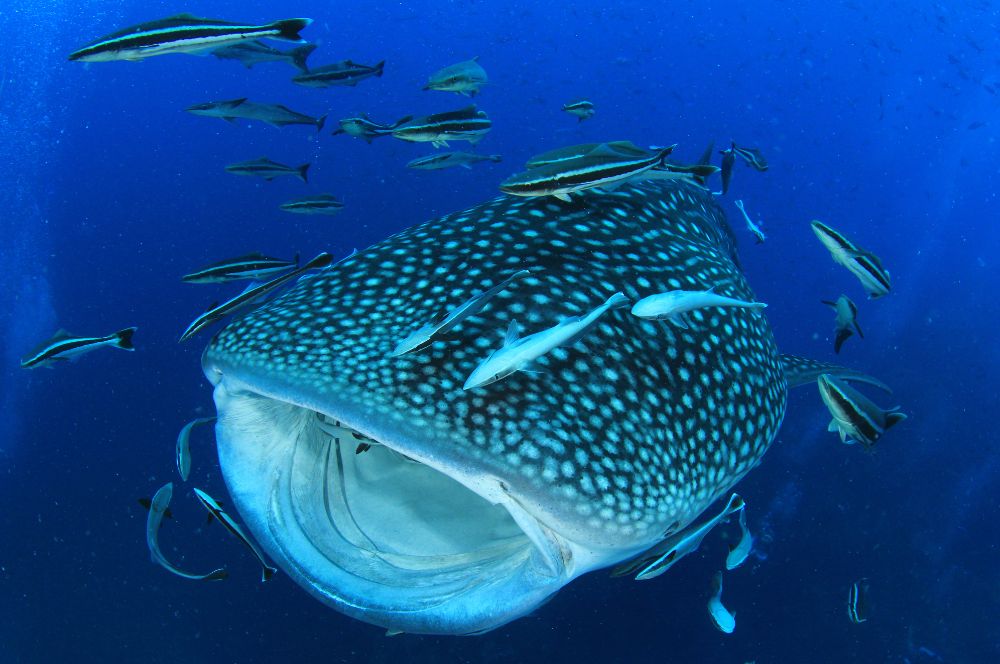
The ocean is home to some of the most remarkable creatures on Earth, among which are the ten largest fish species. These ocean giants, such as:
-
The whale shark
-
The basking shark
-
The great white shark
-
The tiger shark
-
The giant manta ray
-
The ocean sunfish
-
The greenland shark
-
The sawfish
-
The arapaima
-
The beluga sturgeon
They exceed all other fish species by a considerable margin in weight and length. They showcase the grandeur of marine life, from the whale shark, the largest fish species, to the ocean sunfish, the largest bony fish that can reach over 6 m long at maturity and weigh 2,744 kg.
These largest fish species play a critical role in marine ecosystems. They fascinate us not only for their size but also for their ecological importance. Fisheries management practices aim at preserving these significant fish stocks by preventing overfishing and ensuring the sustainable use of our shared ocean resources.
Unveiling the Whale Shark: The Ocean's Largest Fish
The whale shark, one of the many shark species, holds the record as the largest fish species, with some individuals measuring a staggering 18.8 meters in length and weighing a whopping 21.5 tonnes. But their size isn’t their only impressive feature. Whale sharks also boast a notable lifespan ranging from 80 to 130 years, a fact that may play a significant role in their migratory habits across warm tropical oceans.
Despite their size and lack of significant natural predators, larger whale sharks face mounting threats from human-related dangers. These majestic creatures, known for their diet of plankton and small fish which whale sharks eat, are often victims of illegal hunting, caught as bycatch from fishing activities, and face the risk of vessel strikes. Efforts to conserve the whale shark population are therefore crucial to ensuring the survival of this oceanic titan.
Basking Shark: The Gentle Giant
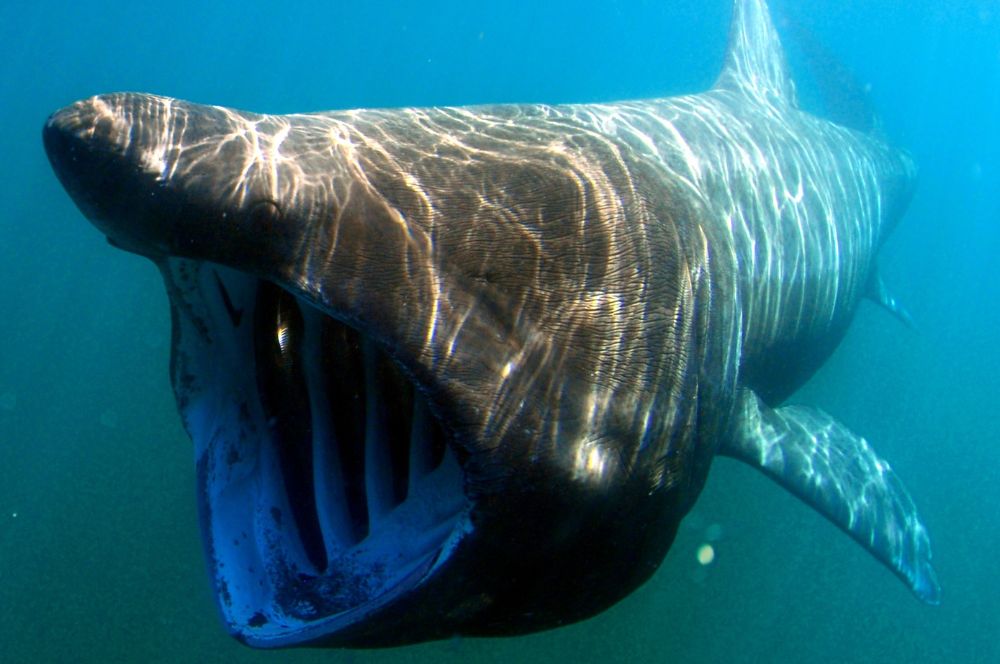
Meet the basking shark, the second-largest living fish, reaching lengths of up to 14 meters and weights around 5.2 tonnes. Unlike their predatory cousins, basking sharks are gentle giants. They are filter feeders, primarily consuming plankton as their main source of food. These peaceful creatures are a testament to the diversity and balance of life in the ocean.
Despite their peaceful nature, basking sharks face significant threats. Overfishing, bycatch losses, and a history of heavy commercial exploitation have led to a decline in their population, making them a vulnerable species. Protecting these gentle giants is not just about preserving biodiversity, but also about maintaining the balance of life in our oceans.
The Elusive Great White Shark: Apex Predator of the Seas
The great white shark, one of the ocean’s most formidable predators, can reach lengths up to 7 meters and weigh as much as 3.324 tonnes. These sharks are not just known for their size, but also for their:
-
extensive lifespan, which can exceed 70 years
-
role as long-term apex predators in marine ecosystems
-
ability to help maintain balance by regulating prey populations
Great white sharks, with their imposing presence and predatory nature, are often seen as monsters of the deep. However, their role in the ocean is vital. As apex predators, they help control the populations of their prey, preventing overpopulation and ensuring a balanced ecosystem.
Manta Rays: Majestic Dancers of the Ocean
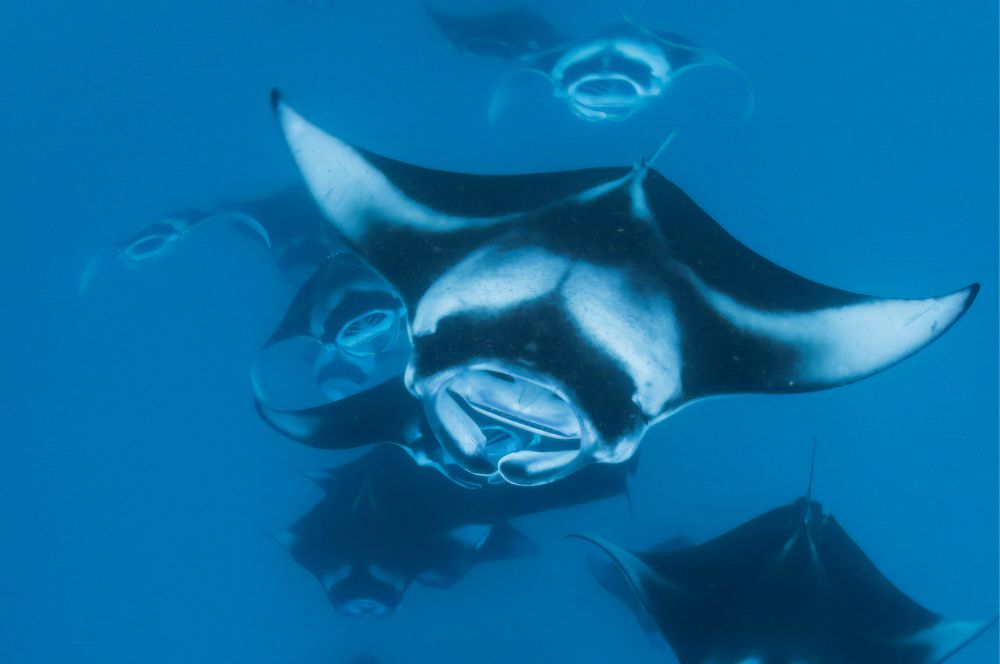
Manta rays, with their graceful movements and elegant forms, are truly the dancers of the ocean. The giant oceanic manta ray, which can grow up to 23 feet and weigh around 3 tons, exhibits its grandeur in the ocean’s vastness. Comparatively, the reef manta ray, while smaller, still demonstrates considerable size among marine creatures, reaching lengths of up to 5.5 m and weighing up to 1.4 tons.
These majestic creatures are filter feeders that primarily consume plankton, sieving these tiny organisms from the water as they swim. However, the reef manta ray is listed as a Vulnerable species on the IUCN Red List, with their populations declining due to human activities like overfishing.
Each manta ray has a unique pattern of markings on its underside, which allows for individual identification and adds a personal dimension to human interactions with these majestic animals.
Behemoths of Freshwater: Largest Freshwater Fish Around the Globe
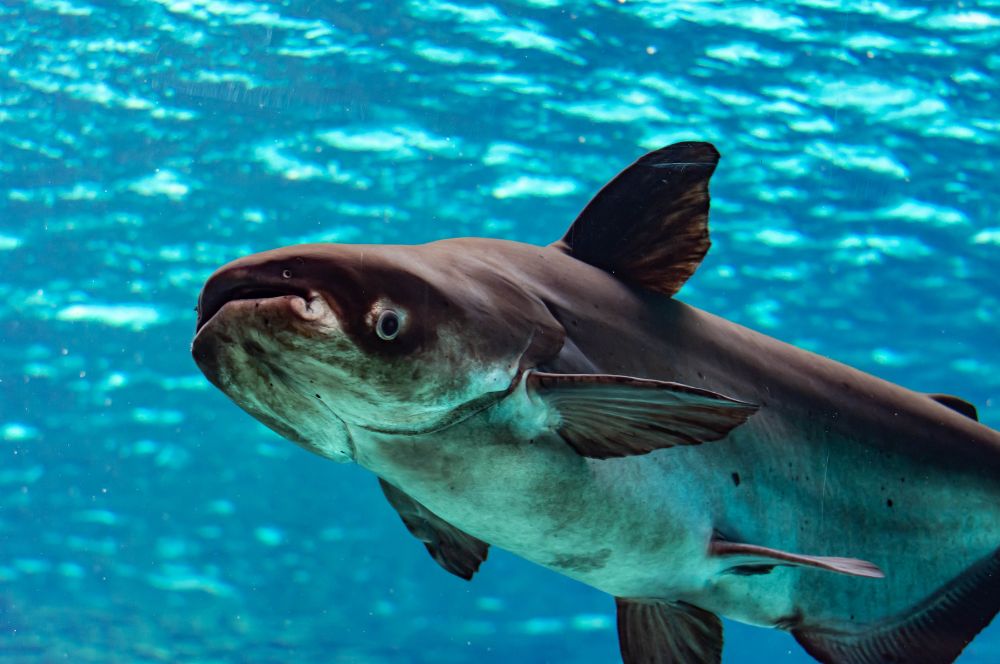
While the ocean is home to most of the world’s largest fish, freshwater habitats also host some true behemoths. Species like the Mekong giant catfish and the beluga sturgeon are some of the largest freshwater fish in the world, with individuals recorded at over 300 kilograms and more than 3 meters in length. These freshwater leviathans, like their oceanic counterparts, play an important role in their ecosystems and face significant challenges.
These large freshwater species are under threat from overfishing and bycatch, leading to conservation efforts for more sustainable fishing and improved fisheries management. Their survival and well-being are integral to the health of our freshwater ecosystems and to the communities that depend on these waters for their livelihood.
Gigantic Catfish of the Mekong River
The Mekong giant catfish is one of the world’s largest freshwater fish and a true titan of the Mekong River. These giants distinguish themselves not only by their size but also by their unique adaptations to their specific freshwater habitat.
However, the status of the Mekong giant catfish is critically endangered, exemplifying the unique challenges faced by this and other distinct freshwater fish populations within the Mekong region. To ensure the future survival of the Mekong giant catfish, a critical need exists for a coordinated management plan involving countries along the Mekong River, addressing the current lack of protection and inadequate management.
Sturgeons: The Armored Titans of Freshwater
Sturgeons are an ancient group of fish, with a fossil record stretching back to the Lower Jurassic period. They are known for their unique cartilaginous endoskeleton and bodies armored with bony scutes. Among them, the beluga sturgeon stands out as a freshwater titan, with the largest known specimen measuring an impressive 23.6 ft long and weighing 1,571 kg.
These armored titans are under threat, primarily due to the overfishing driven by the demand for their prized caviar. The beluga sturgeon, in particular, has faced significant population declines due to this persistent overfishing. The survival of these ancient creatures hinges on robust conservation efforts and sustainable fishing practices.
Encounters with the Colossal: Diving and Snorkeling with Large Fish
Imagine the thrill of coming face-to-face with a giant of the deep. Scuba diving, snorkeling, and freediving offer unique opportunities to observe these magnificent creatures in their natural habitats. Underwater encounters with large fish like basking sharks and tiger sharks can be thrilling, but must always prioritize the safety of both humans and the animals.
Whether it’s swimming alongside a basking shark as it peacefully filters plankton at the surface or observing a patrol of tiger sharks in their territory, these encounters offer a rare glimpse into the lives of these oceanic titans. However, it’s essential to conduct these activities responsibly, observing safety guidelines, and maintaining a respectful distance from these creatures.
Swimming with Whale Sharks: A Deep Dive Adventure
Swimming with whale sharks is a dream come true for many ocean enthusiasts. These gentle giants allow snorkelers and divers to interact with them respectfully, providing a unique opportunity to appreciate their size and gentle nature up close. Engaging in these underwater activities requires adhering to safety and responsible tourism practices, such as:
-
maintaining a safe distance from the whale sharks
-
not touching or disturbing the whale sharks
-
following the guidance of trained professionals
-
respecting the natural environment and other marine life
By following these practices, you can have a memorable and responsible experience swimming with whale sharks.
Prime locations for these encounters include Mexico, the Galapagos Islands, and the Ningaloo Reef in Australia. Many tour operators offer full packages for snorkelers and divers during certain seasons, providing opportunities for unforgettable encounters with the largest fish in the ocean.
Face-to-Face with Manta Rays: Snorkeling and Freediving
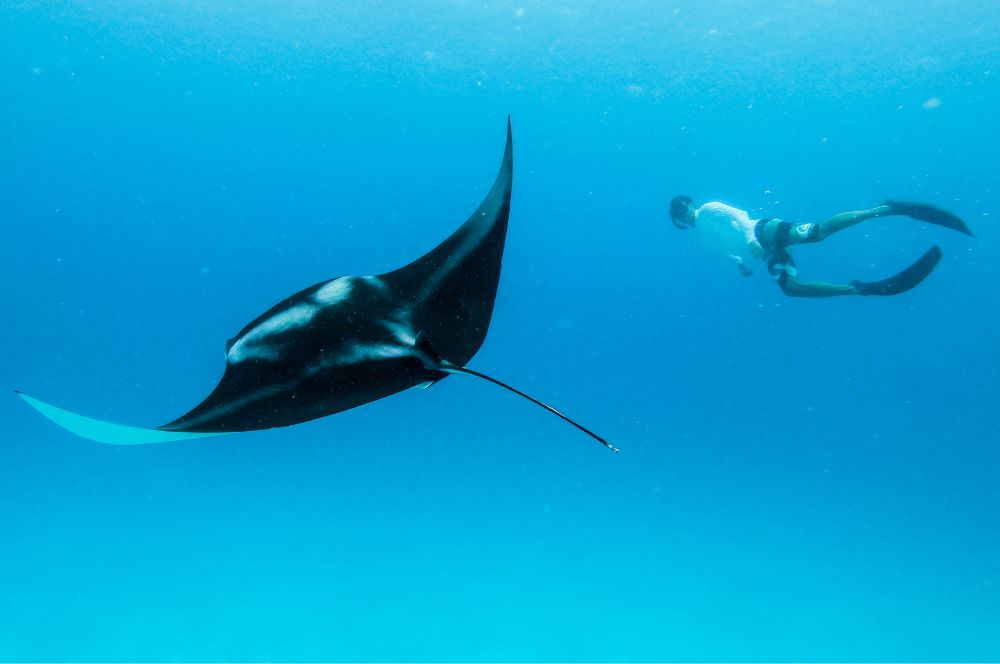
Manta rays, with their graceful movements and curious nature, offer an equally captivating experience. Snorkeling with giant oceanic manta rays offers a unique opportunity to witness these majestic creatures in their natural habitat, often creating breathtaking moments of proximity and interaction.
Keauhou Bay and the Kona Coast in Hawaii are renowned for their after sunset snorkeling tours, where underwater lights attract plankton and manta rays. These snorkeling tours offer an enhanced experience, allowing visitors to witness the beauty of these creatures as they perform their graceful underwater ballet. However, weather conditions such as strong winds and rough seas can lead to decreased visibility and safety concerns, affecting the snorkeling experience with manta rays.
Conservation Efforts: Protecting Our Ocean's Largest Inhabitants
The survival of these threatened species, marine and freshwater behemoths, which have few natural predators, is threatened by various human activities. Overfishing, habitat destruction, and climate change pose significant challenges to their survival in warm temperate seas. The World Wildlife Fund engages in numerous initiatives for the protection of large fish species, promoting sustainable fisheries, and fighting against illegal and unregulated fishing worldwide.
Intensive fishing has led to a drastic decline in the population of certain large fish species, with the Mekong giant catfish’s numbers having decreased by an estimated 90% in the past two decades. WWF’s targeted conservation efforts for the Mekong giant catfish focus on establishing regional management plans and the protection of key spawning grounds in Thailand and Laos to aid recovery in wild populations.
The Role of Marine Protected Areas
Marine protected areas (MPAs) play a crucial role in the conservation of large fish species. Established by governments to limit human activities that damage the environment, such as overfishing and habitat destruction, MPAs ensure the protection of marine biodiversity.
By providing safe habitats with varying levels of protection, MPAs serve a crucial role in conserving large fish species. Some areas within the Great Barrier Reef Marine Park, for example, restrict fishing to boost fish and coral populations. These designated no-take zones prevent overfishing, allowing fish species to reproduce effectively and maintain robust populations critical for both conservation and continued fishing.
Sustainable Fishing Practices: A Ray of Hope
Sustainable fishing practices are essential for the future of our oceans and freshwater ecosystems. Techniques like rod-and-reel fishing, spearfishing, and traditional methods used by indigenous cultures can target individual fish, greatly reducing bycatch.
By reducing bycatch and ensuring the sustainable use of our shared aquatic resources, these practices not only help conserve fish populations but also maintain the balance of our oceanic and freshwater ecosystems. It is a ray of hope for these aquatic giants, ensuring their survival for future generations to marvel at.
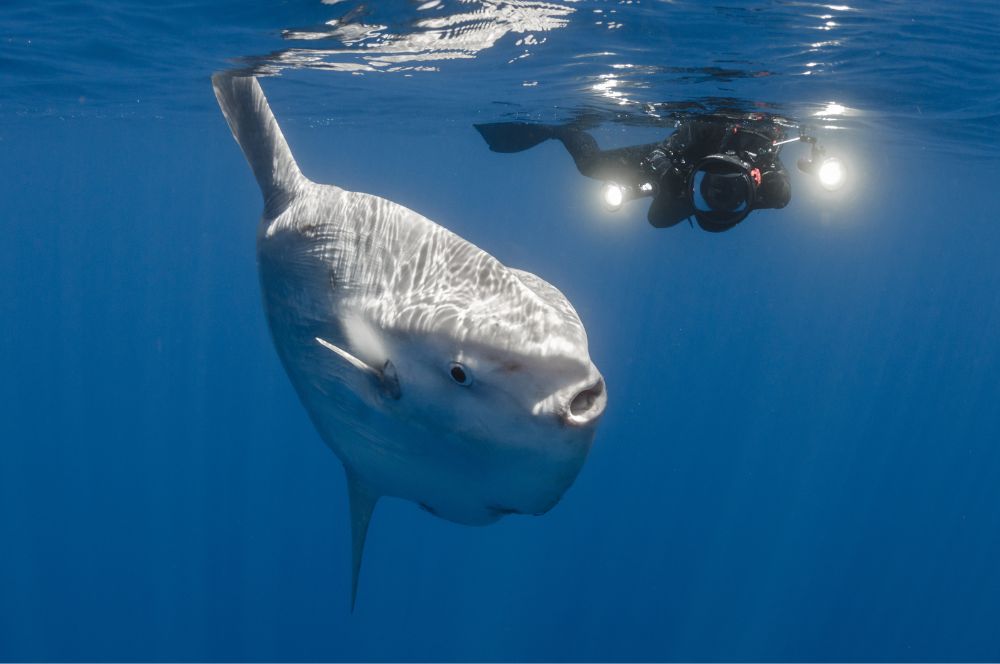
Comparing Titans: Charting the Size and Habitats of Giant Fish
Our journey through the world of giant fish wouldn’t be complete without a comparative glance at their size and habitats. From the colossal whale shark, the largest fish species, to the basking shark, the second largest, each of these aquatic titans showcases the diversity and grandeur of life in our oceans and freshwater ecosystems.
The Southern sunfish, also known as the largest living bony fish, was found in the Atlantic Ocean weighing a staggering 2,744 kilograms. On the other hand, the ocean sunfish, another substantial bony fish, is known for a weight of about 2.3 tonnes and a length of approximately 3.1 meters. These figures illustrate the incredible size and diversity of these aquatic giants, each an integral part of our planet’s rich biodiversity.
Summary
Our journey through the world of giants has taken us from the vast expanses of the open ocean to the winding rivers of our continents. We’ve learned about the awe-inspiring sizes of these creatures, their unique behaviors, and the roles they play in their ecosystems. We’ve also explored the threats they face and the efforts being made to protect them.
As we conclude this deep dive into the world of giant fish, let’s remember that these creatures are more than just the titans of the aquatic world. They are crucial components of our planet’s biodiversity, and their survival is interlinked with the health of our oceans and freshwater ecosystems. By understanding them better, we can contribute to their conservation and ensure that future generations can marvel at these remarkable creatures just as we have.
Frequently Asked Questions
What is the biggest fish in Australia?
The largest fish in Australia is the Murray Cod, with the biggest recorded specimen reaching 1.8m in length and weighing 113kg. It is the largest freshwater fish in the country.
What is the largest fish in the world?
The largest fish in the world is the whale shark. It can reach lengths of over 40 feet.
What are the threats faced by whale sharks?
Whale sharks face threats from illegal hunting, bycatch, and vessel strikes, posing serious risks to their population.
How can divers interact safely with large fish species?
When interacting with large fish species, divers should prioritize safety by maintaining a respectful distance and avoiding disturbance to the animals. This is crucial for both the diver's safety and the well-being of the fish.
What are marine protected areas?
Marine protected areas, or MPAs, are designated by governments to limit damaging human activities like overfishing and habitat destruction, protecting marine biodiversity.
Related Posts
-
Discover Sydney's Underwater Rainforests:…
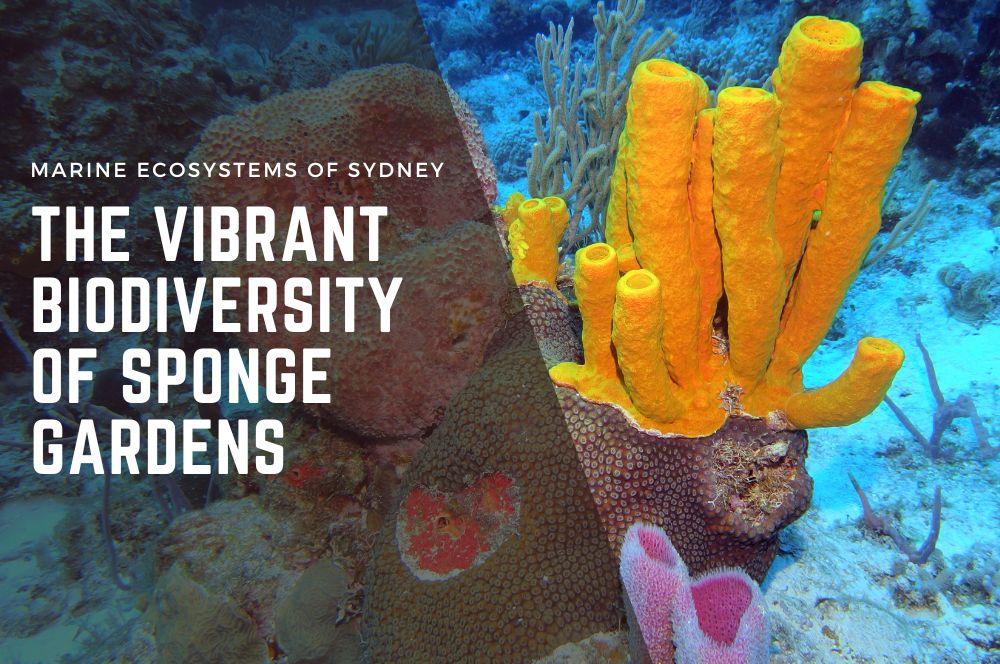
Discover Sydney's Underwater…
Exploring the Vibrant Biodiversity of Sponge Gardens in Marine Ecosystems of Sydney Sponge gardens are underwater […] -
Discovering the Blue Groper | A tribute…
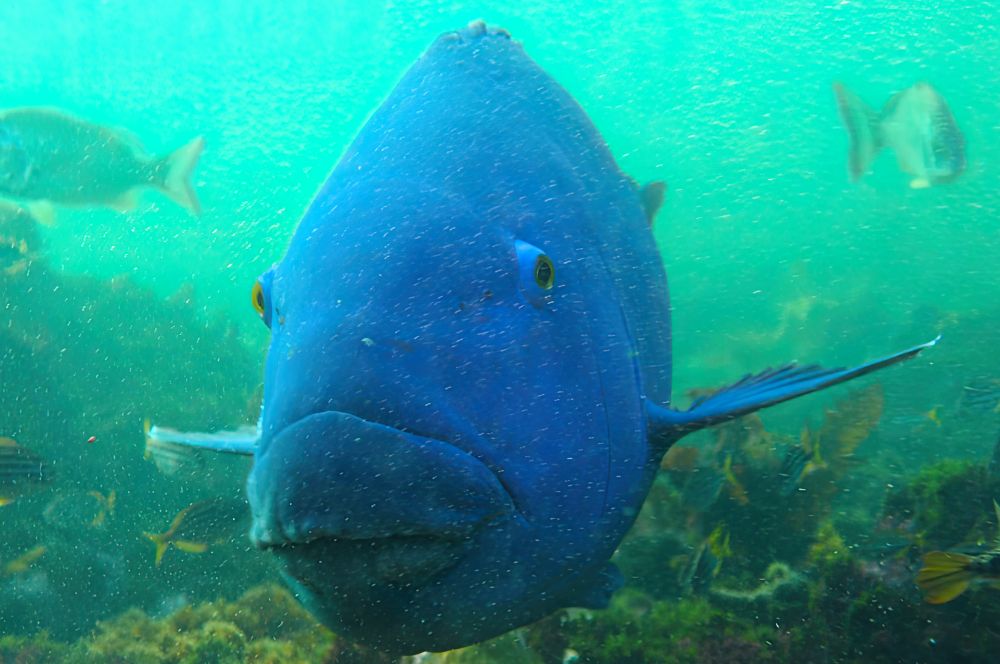
Discovering the Blue…
Discovering the Blue Groper: An Insight into Australia's Gentle Marine Giant This blog serves as a heartfelt […] -
Diving with the Elusive Weedy Sea Dragons
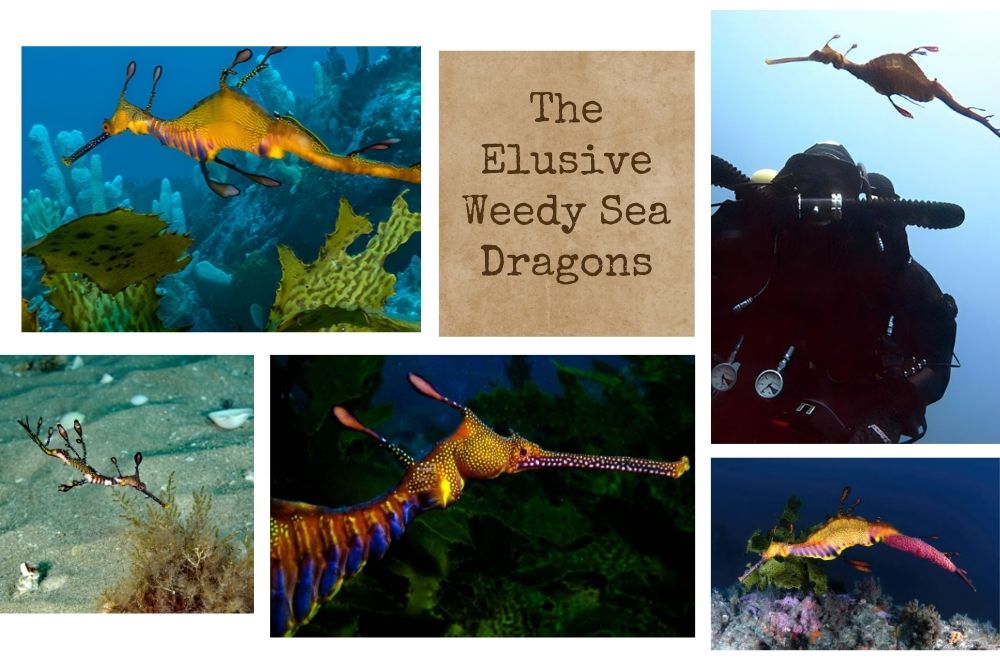
Diving with the Elusive…
Diving with the Elusive Weedy Sea Dragons: An Unforgettable Marine Adventure Have you ever dreamt of encountering […] -
Inky Encounters | Diving with Sydney's…
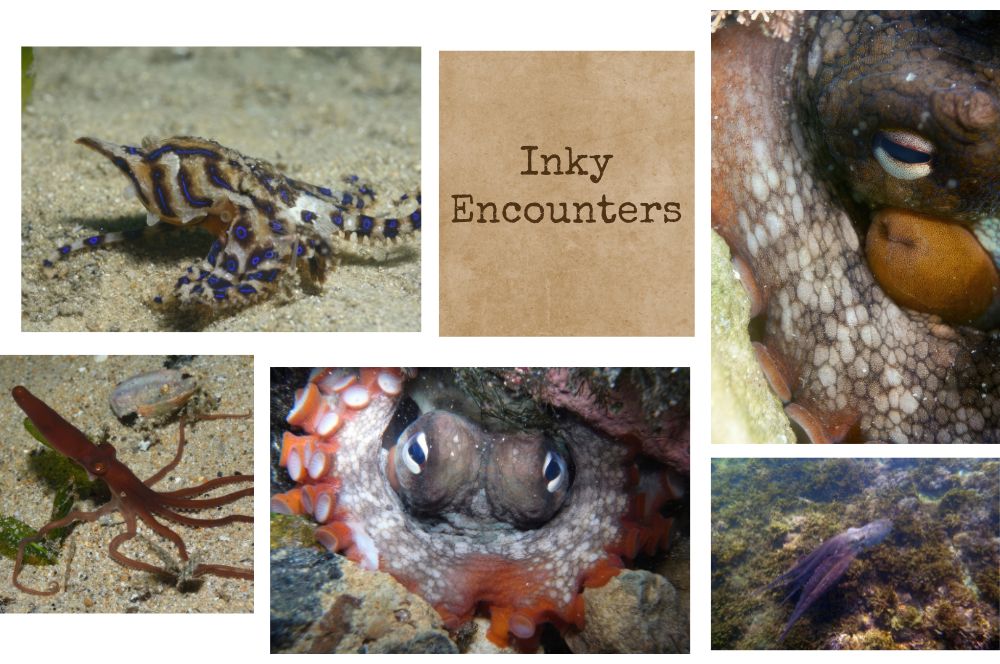
Inky Encounters | Diving…
Inky Encounters: Diving with Sydney's Spectacular Octopuses Are you ready to dive into the mesmerizing world […]
Recent Posts





